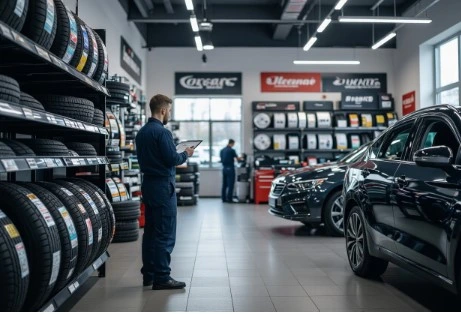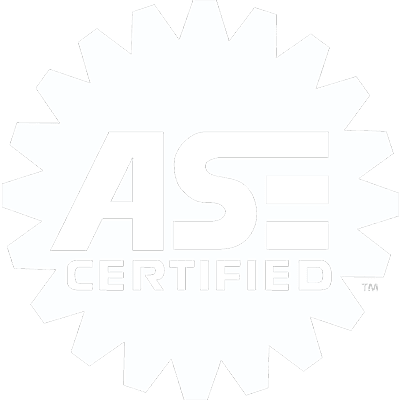Over time, your vehicle’s tires naturally wear down, and understanding the right moment for replacement can save you from safety risks and poor performance. At Aloha Auto Repair, we’re here to guide you through the necessary aspects of buying new tires, helping you make informed choices tailored to your driving needs. This post will equip you with practical tips and advice on when to buy new tires, as well as the advantages of purchasing new tires online, ensuring you get the best value and quality for your vehicle.
Key Takeaways:
- Understanding when to buy new tires helps ensure safety and optimal vehicle performance.
- Consider tips for buying tires, such as checking tread depth, matching tire types, and comparing brands to find the best fit for your needs.
- Exploring options for new tires online can offer convenience and a wide selection but requires careful research to avoid mismatches or poor quality.
- Visiting Aloha Auto Repair provides expert guidance and professional tire installation services.
- Planning tire purchases ahead of time can help you take advantage of deals and avoid last-minute replacements.

The Real Cost of Skimping on Quality
Choosing budget tires may save you money upfront, but the long-term expenses often outweigh the initial savings. Inferior tires tend to wear out faster, forcing you to replace them more frequently. Additionally, their poor tread and rubber compounds can increase fuel consumption by up to 10%, adding to your operational costs. You might also face higher repair bills if cheap tires contribute to uneven wear or suspension damage. Factoring in these hidden costs helps you see how investing in quality tires can ultimately protect both your vehicle and your wallet.
How Cheap Tires Can Hurt Your Wallet
Opting for low-cost tires often means sacrificing durability and performance. These tires generally have shorter tread life and provide less traction, leading to more frequent replacements. On average, budget tires last around 25,000 miles, compared to 40,000–60,000 miles for premium options. Besides replacement costs, you might notice compromised fuel efficiency and increased maintenance due to uneven wear. These financial setbacks accumulate quickly, making cheap tires a false economy.
The Safety Risks Associated with Inferior Products
Lower-quality tires frequently fall short in critical safety areas, such as wet weather handling and braking distance. Studies show that some budget tires can increase stopping distances by up to 30 feet on wet roads compared to premium tires. Reduced grip and slower response times heighten the risk of accidents, especially in emergency situations. Using subpar tires could therefore compromise your control and put you and your passengers in harm’s way.
Inferior tires often employ lower-quality rubber compounds and less advanced tread designs, making them prone to tread separation, blowouts, and hydroplaning. For example, a 2021 consumer test revealed that several economy tires failed to meet minimum safety standards during wet braking tests. Beyond braking, worn or poorly constructed tires can negatively affect steering responsiveness and stability at high speeds. Given that tire failures contribute to thousands of accidents annually, prioritizing safer, tested options isn’t just about compliance—it directly impacts your daily driving security.
Deciphering Tire Specifications
Spotting the right tire for your vehicle becomes simpler once you understand tire specifications printed on the sidewall. These alphanumeric codes reveal the tire’s size, load index, speed rating, and more—key details that ensure compatibility and safety. For example, a code like P215/65R15 95H breaks down into tire type, width in millimeters, aspect ratio, construction type, rim diameter in inches, load capacity, and maximum speed capability. Grasping these elements equips you to make an informed decision and avoid mismatches when buying new tires.
Understanding Tread Depth and Patterns
The tread depth indicates how much rubber is between you and the road, affecting traction and handling. New tires typically feature a tread depth around 10/32” to 12/32” depending on the type. Stay alert to tread patterns too—directional designs, for instance, excel at channeling water away, thus reducing hydroplaning, while asymmetric patterns often enhance cornering. Match tread style to your driving conditions: aggressive all-terrain for off-road use or smooth, low-rolling-resistance treads for highway efficiency.
Interpreting the Sidewall Code
The sidewall code is your tire’s fingerprint—a string of letters and numbers packed with imperative specs. This includes tire width, aspect ratio, and rim size, all of which must correspond to your vehicle’s requirements to maintain performance and safety. Additionally, load indexes and speed ratings indicate the maximum weight a tire can bear and the highest speed it can sustain reliably, helping you avoid overloading or downsizing your tires.
Digging deeper into sidewall codes, you’ll find the DOT number, confirming the tire meets U.S. safety standards, and the manufacturer’s date code telling you when the tire was made. Older tires—even unused ones—may degrade over time, so considering the manufacture date can prevent premature failures. For example, a code like “DOT X3 A2 2319” tells you the tire was produced in the 23rd week of 2019. This information ensures the tires you’re buying have not only the right specs but also fresh rubber for optimal performance.
Seasonal Considerations: When to Buy and What to Choose
Choosing the right tires involves more than just sizing and price; factoring in seasonal changes can make a significant difference in performance and safety. Opt for summer tires as temperatures rise—they provide better grip on warm, dry, and wet roads. When winter approaches, switching to winter tires with specialized tread patterns helps maintain traction on snow and ice. Also, consider all-season tires if your climate offers mild variations, but be mindful they don’t excel in extreme conditions. Aligning your new tire purchase with seasonal demands ensures better handling and maximizes tire lifespan.
The Importance of Weather-Appropriate Tires
Each tire type caters to specific weather conditions—summer tires deliver enhanced traction on hot pavement, while winter tires feature deeper treads and rubber compounds designed to remain flexible below 45°F. Using the correct tires reduces stopping distances and improves vehicle control, especially in rain, snow, or icy roads. If you live in a region with distinct seasons, rotating between summer and winter tires can significantly enhance your safety and driving confidence, preventing premature wear and optimizing performance throughout the year.
Timing Your Purchase for Optimal Deals
Many tire retailers offer discounts during off-peak seasons when demand is lower. Buying new tires during spring or fall often results in better pricing and more promotional offers since these periods align with seasonal changeovers. Additionally, shopping right after holiday sales events, like Black Friday or Memorial Day, can save you money. Planning your purchase early, before peak driving seasons, helps you avoid last-minute rushes and inflated prices, making your tire investment more cost-effective.
Delaying your tire purchase until winter sales can also be a strategic move if you specifically want winter tires. Retailers tend to clear inventory in late winter or early spring, offering some of the best deals on winter sets. Sign up for newsletters from trusted retailers like Aloha Auto Repair to receive alerts on upcoming promotions. Bundled offers, including installation or tire balancing, may further reduce overall costs. Staying informed and planning ahead ensures you maximize value without compromising on quality or timing.
Navigating the Buying Process: Retail vs. Online
Choosing between retail stores and online retailers can shape your buying new tires experience. Retail outlets offer immediate access, expert guidance, and often installation services, which can be valuable if you want hands-on assistance. Online stores provide convenience, broader selection, and sometimes lower prices, allowing you to browse extensively and read detailed reviews before making a decision. By weighing these options, you can select the path that best fits your timeline, budget, and preference for support during the purchase process.
The Pros and Cons of Each Shopping Experience
| Retail | Online |
| Instant product availability | Wide selection of brands and models |
| Personalized advice from experts | Convenient shopping from home or work |
| On-site installation services | Often lower prices due to reduced overhead |
| Can physically inspect tires before purchase | Access to extensive customer reviews and ratings |
| Limited to store inventory and hours | Shipping time delays tire availability |
| Potentially higher prices | Installation requires arranging separately |
How to Compare Prices and Reviews Effectively
Pricing can vary widely between retailers, so comparing prices alongside tire ratings helps ensure you get value and performance. Use price comparison websites alongside manufacturer and seller reviews to spot trends in quality and customer satisfaction. Websites like TireRack.com and ConsumerReports offer detailed insights, while checking install costs at local shops confirms the total expenditure. Applying a structured approach to price and review evaluation helps you avoid pitfalls and confidently choose the best tire brand and model for your vehicle’s needs.
| Check multiple retailers for best price | Read customer reviews for real-world feedback |
| Factor in installation and shipping fees | Review expert ratings from trusted sources |
| Look for discount promotions or rebates | Compare tire lifespan and warranty details |
| Use tools like price alerts for timely deals | Identify common complaints or praise patterns |
Installation and Maintenance: Keeping Your Tires in Top Shape
Proper installation and ongoing maintenance play a big role in maximizing the lifespan and performance of your new tires. A mismatch in mounting or improper tightening can cause uneven wear or even compromise safety. Routine checks on tire pressure, tread depth, and alignment prevent premature wear and maintain fuel efficiency. By dedicating a little time and attention to these details, you ensure the investment in buying new tires delivers reliable service mile after mile.
The Importance of Professional Installation
Professional installation guarantees that tires are mounted correctly on the rims, balanced, and torqued to your vehicle’s specifications. Technicians use specialized equipment to avoid rim damage and ensure even weight distribution, which reduces vibration and uneven tread wear. A professional’s expertise also helps spot potential issues like valve stem leaks or incompatible tire sizes. You’ll benefit from their precise work, leading to safer drives and longer tire life.
Routine Maintenance Tips for Longevity
Consistently checking tire pressure—ideally once a month—helps maintain proper inflation. Underinflated or overinflated tires wear unevenly and can affect handling. Regular rotation, about every 5,000 to 7,000 miles, balances wear across all four tires. Keep an eye on tread depth and alignment, addressing any uneven wear promptly. After these routine steps, your tires will remain dependable and perform at their best longer.
Following these daily care practices can significantly extend the lifespan of your tires:
- Check and adjust tire pressure using a reliable gauge before long trips.
- Rotate tires regularly to ensure even wear patterns—front to back, and side to side.
- Inspect tread depth; replace tires once below 2/32 of an inch for safety.
- Have wheel alignment checked if your vehicle pulls to one side or uneven tire wear appears.
- After completing your maintenance routine, store spare tires properly to prevent degradation.
Digging deeper into tire longevity, environmental factors like temperature changes and road conditions also impact wear rates. For example, driving frequently on rough or unpaved roads can reduce tread life by up to 30%. Additionally, tire compounds suited to your climate—such as all-season versus summer tires—help maintain optimal grip and durability. After staying vigilant in these areas, your investment in buying new tires will pay off with enhanced safety and performance.
- Adapt tire choices to your typical driving environment and climate.
- Clean tires occasionally to remove debris that can cause punctures or accelerate wear.
- Monitor for sidewall damage, cracks, or bulges which signal the need for replacement.
- Balance tires after mounting to minimize vibration and suspension stress.
- After integrating maintenance with careful driving habits, you’ll enjoy smoother, safer rides and extended tire lifespan.
To wrap up: Essential Advice for Buying New Tires

Complete Guide To Buying New Tires And Maintaining Them
With this in mind, when buying new tires for your vehicle, you should consider factors such as tread life, driving habits, and seasonal conditions to ensure safety and performance. Knowing when to buy new tires helps you avoid unexpected issues, and following tips for buying tires can guide you in selecting quality options. Additionally, exploring new tires online provides convenience and a wide range of choices. Trust Aloha Auto Repair for expert advice and reliable service to keep your vehicle running smoothly and safely on the road.
FAQ About Buying New Tires from Aloha Auto Repair
Q: How do I know when to buy new tires for my vehicle?
A: You should consider buying new tires when the tread depth reaches 2/32 of an inch or less, as this indicates reduced traction and safety.
Q: What tips can help me make the right choice when buying new tires?
A: When buying new tires, it’s important to identify your vehicle’s tire size, driving habits, and the typical road conditions you encounter. Selecting tires that match these factors will improve performance and safety.
Q: Is it safe to buy new tires online, and what should I consider?
A: Buying new tires online can be safe and convenient if you purchase from reputable retailers. Ensure that you verify the tire specifications, shipping policies, and return options.
Q: How often should I check my tires to determine if buying new tires is needed?
A: Regularly inspecting your tires every month is a good practice. Look for signs of wear, tread depth, and any damage.
Q: Can I mix different brands or types of new tires on my vehicle?
A: It is generally advised to avoid mixing different brands, tread patterns, or types of tires on the same vehicle. Uniform tires provide consistent handling and traction, enhancing safety.
Ready to make buying new tires stress-free and smart? Download our free checklist and ensure you choose the right tires for your car and budget—no guesswork, no regrets. Contact Aloha Auto Repair today for expert advice and unbeatable service!
Also read:
Flawless Transmission Repair Near Me: Aloha Auto Repair’s Proven Tips to Save Big
Expert Cars Automotive Repair with Aloha Auto Repair: Keep Yours Running Like New
Say Goodbye to Car Engine Repair Worries with Aloha Auto Repair’s Pro Tips






